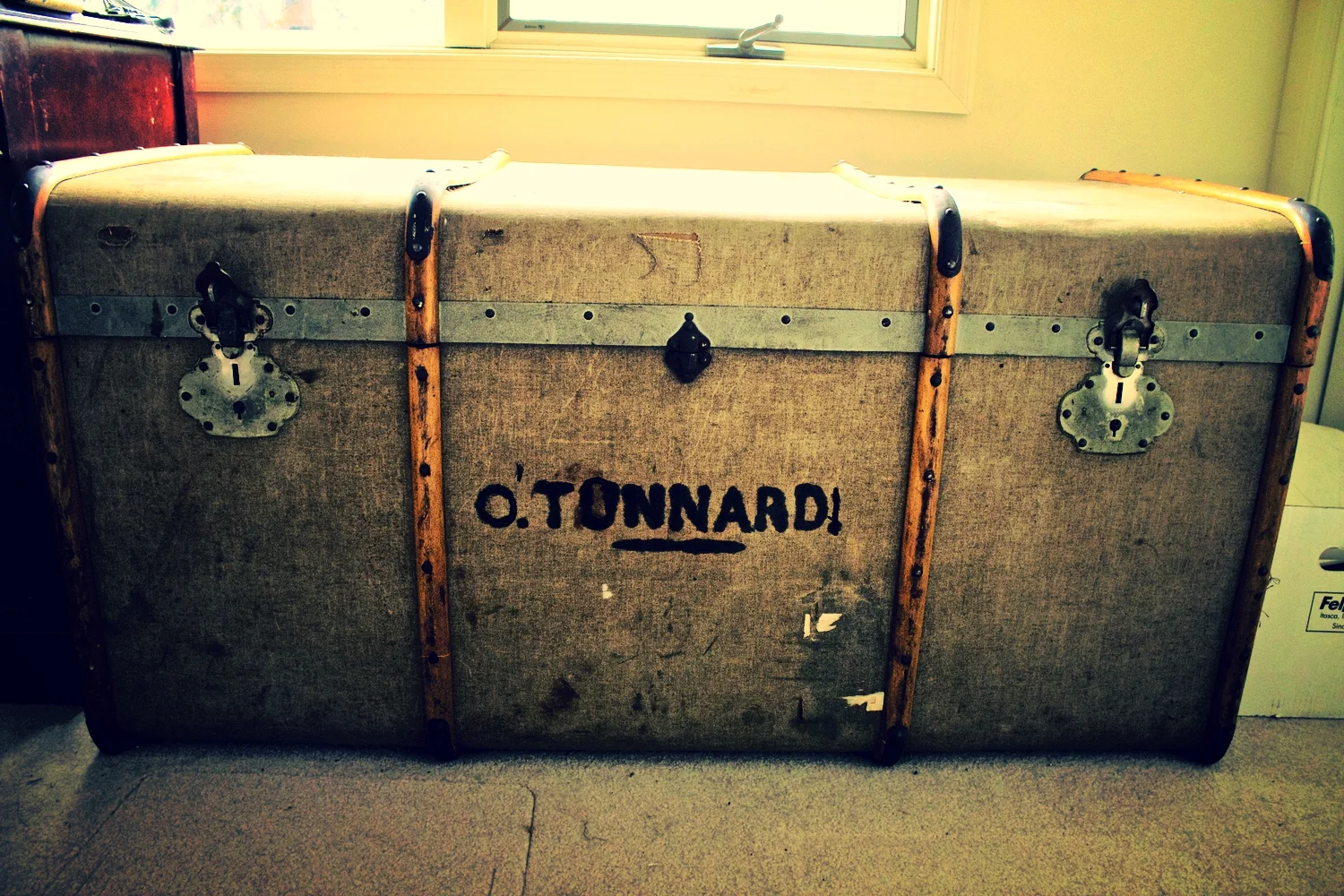Susan's Blog!
/A BRIEF HISTORY OF THE TRUNK THAT INSPIRED THE TRILOGY
No one in my family ever talked about the large steamer trunk that stood in the corner of our dining room. It always stayed shut.Silent.We never opened it up to see what was inside.****
My father, Samuel, grew up in Vienna with his father, David, mother Eva and sister, Elsa, along with David's brother, Jakob and his wife, Lusia.
The family lived in an apartment building they owned located at Beheimgasse 21. Samuel's father owned a lumberyard which he ran on the first floor of the building
Jakob and Lusia were my father's closest relatives as he was growing up. Since they were unable to have children of their own, they treated my father as the son they never had.
When my father was eighteen, Hitler and his troops invaded Austria in March, 1938. He and his family knew that it was a matter of time that they would have to leave the country to avoid persecution.
It was too late for Samuel's father, however. David was arrested by the Nazis shortly after the Anschluss and transported to Dachau. Worried that they, too, might be arrested, Jakob and Lusia made plans to leave Vienna. They purchased a large trunk to hold the contents of their apartment.
The trunk was sent ahead to London with the thought that Jakob and Lusia would eventually make their way to England to retrieve their possessions. During the Spring of 1938, they fled to Antwerp, Belgium, where they stayed in an apartment located at Kreeftstraat 27.
A year later on April 9, 1939, my father fled Vienna for the United Kingdom. He had been given sponsorship for a visa by a Righteous Gentile in Belfast, Northern Ireland, named Florence Hobson.
While he was in London, on his way to Belfast, my father checked up on the trunk in London to ensure that it had arrived safely.
Once in Belfast, my father lived on a farm for Jewish Refugees called Millisle Farm. World War II broke on September 1939 shortly after he arrived on the Farm. While listening to a radio broadcast, he learned that London was being bombed by the Germans in the Blitz. My father grew concerned about the trunk's safety, fearing it might be destroyed in the bombing. He called the storage facility where the trunk was being stored and had it sent to Belfast where it stayed in Florence's garage during the War years.
My father arrived in America in 1946. Once in the United States, he wrote to Florence to forward the trunk to him. Being a practical woman, Florence insisted that instead of sending the trunk to America, the clothing packed inside be distributed to the needy of post-War Europe. Because Jakob and Lusia had been his closest relatives, my father insisted that the trunk be sent America as a memento of his aunt and uncle who had perished at the hands of the Nazis. Florence finally conceded to by my father's wishes and sent the trunk to America.
After my mother and father were married, they placed the trunk in plain sight in the dining room. It stood there, as if to blend in as a part of the decor.
It is because of the existence of the trunk that inspired me to ask my father those hard questions about my father family who had perished at the hands of the Nazis. And because of the existence of the trunk, I was inspired to write the Trilogy.
Seeking a Common Thread, Book one of the Trunk Trilogy, is about my getting to know about Tante Lusia "the mysterious woman of the trunk" through the possessions she left behind.


